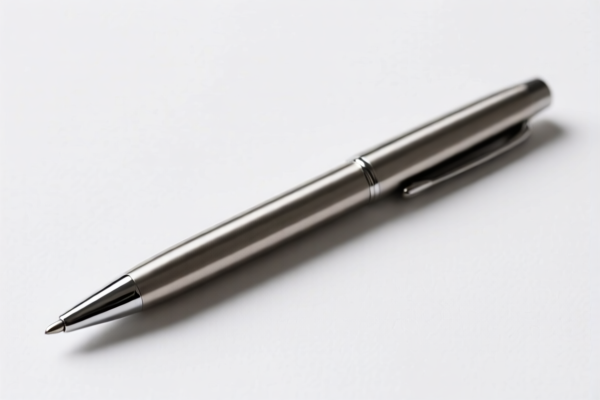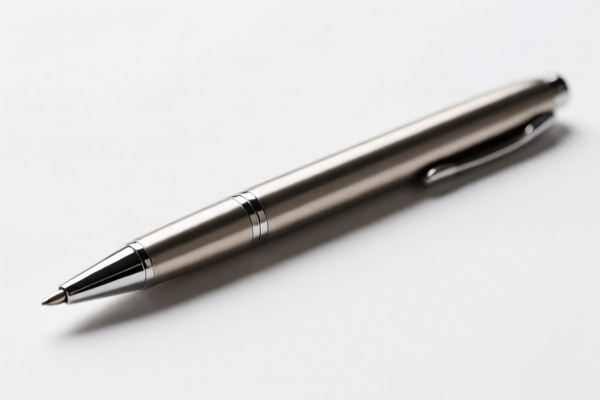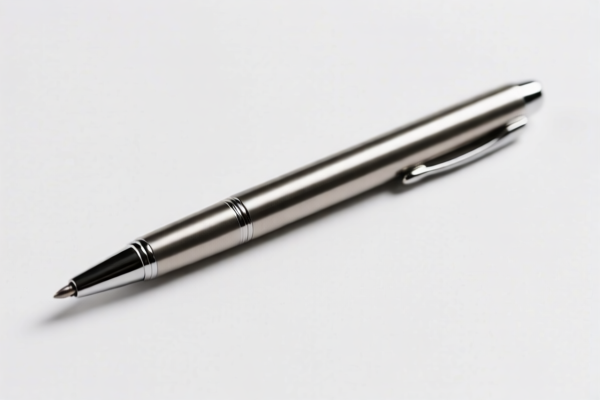| HS Code | Official Doc | Tariff Rate | Origin | Destination | Effective Date |
|---|---|---|---|---|---|
| 8305906000 | Doc | 43.2% | CN | US | 2025-05-12 |
| 8305903010 | Doc | 30.0% | CN | US | 2025-05-12 |
| 8304000000 | Doc | 33.9% | CN | US | 2025-05-12 |
| 8304000000 | Doc | 33.9% | CN | US | 2025-05-12 |




Metal Pen
A metal pen is a writing instrument utilizing a metal casing to house and protect its internal components, typically a ballpoint, rollerball, or fountain pen mechanism. The metal construction offers durability, a premium feel, and often a higher perceived value compared to pens constructed from plastic or other materials.
Materials
While termed "metal pen," the casing can be constructed from various alloys, including:
- Stainless Steel: Common due to its corrosion resistance and affordability. Offers a brushed or polished finish.
- Brass: Provides a heavier weight and a warmer tone. Often plated with chrome, gold, or other finishes.
- Aluminum: Lightweight and relatively inexpensive, often used for more utilitarian designs.
- Titanium: Extremely strong and lightweight, but more expensive. Offers exceptional durability and a distinctive look.
- Copper: Less common, but provides a unique aesthetic and antimicrobial properties.
- Precious Metals (Gold, Silver, Platinum): Used in luxury pens, offering high value and often intricate detailing.
Purpose
The primary purpose is writing and drawing. However, metal pens are often chosen for:
- Professional Use: Their appearance conveys a sense of quality and sophistication.
- Gift-Giving: Often presented as gifts for graduations, promotions, or other special occasions.
- Collectibility: Certain metal pens, particularly limited editions or those from renowned brands, are highly sought after by collectors.
- Everyday Writing: Their durability makes them suitable for frequent use.
Function
Metal pens function identically to their plastic counterparts, employing one of the following mechanisms:
- Ballpoint: Uses a small rotating ball to dispense oil-based ink. Reliable and widely available.
- Rollerball: Uses a rolling ball to dispense water-based ink. Provides smoother writing than ballpoints, but ink tends to be less viscous and can smear more easily.
- Fountain Pen: Uses a nib to deliver liquid ink from a reservoir. Offers a unique writing experience and allows for variation in line width based on pressure and angle.
- Gel Pen: Uses gel ink, which is a water-based ink with higher viscosity. Provides smooth writing and vibrant colors.
Usage Scenarios
- Office Environments: Signing documents, taking notes, general writing tasks.
- Academic Settings: Note-taking, essay writing, examinations.
- Personal Use: Journaling, letter writing, sketching.
- Art and Design: Sketching, illustration, technical drawing (depending on the nib type).
Common Types
- Cap Pens: Feature a removable cap to protect the nib or ballpoint.
- Retractable Pens: Utilize a mechanism (button or twist) to extend and retract the writing tip.
- Twist Pens: Ink is dispensed by twisting the pen body.
- Fountain Pens: Require filling with ink from a bottle or cartridge.
- Luxury Pens: Often feature precious metal components, intricate designs, and high-quality nibs.
- Stylus Pens: Combine a pen with a capacitive stylus for use on touchscreens.
- Multi-Pens: Incorporate multiple ink colors or functionalities (e.g., pen and pencil).
Metal pens fall under fittings for office articles, and parts thereof, of base metal. Here's a breakdown of relevant HS codes based on the provided information:
- 8305906000: This HS code covers fittings for looseleaf binders or files, letter clips, letter corners, paper clips, indexing tags and similar office articles, and parts thereof, of base metal; staples in strips (for example, for offices, upholstery, packaging), of base metal: Other, including parts: Other. This is a broad category encompassing various metal office accessories. The base tariff is 5.7% with an additional 7.5% tariff, increasing to 30.0% after April 2, 2025, resulting in a total tariff of 43.2%.
- 8305903010: This HS code specifically covers fittings for looseleaf binders or files, letter clips, letter corners, paper clips, indexing tags and similar office articles, and parts thereof, of base metal: Other, including parts: Paper clips, and parts thereof Wholly of wire. If the metal pen is constructed entirely of wire, this code applies. The base tariff is 0.0% with an additional 0.0% tariff, increasing to 30.0% after April 2, 2025, resulting in a total tariff of 30.0%.
It's important to determine the pen's construction. If it consists of components beyond solely wire, 8305906000 would be the appropriate classification. If it is wholly of wire, 8305903010 applies.
Customer Reviews
No reviews yet.